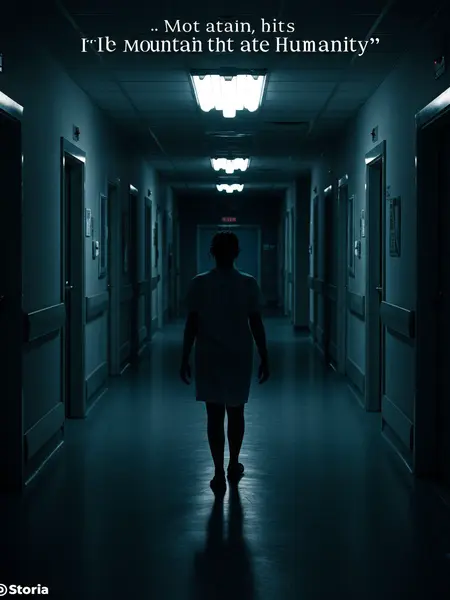Chapter 3: The Abyssal Diary
Excerpt from Professor Michael Grant’s Diary——
July 13, 2045
A week ago, Jake Turner—one of my grad students—sent me an email at 3:00 a.m. He said they’d picked up anomalous sonar readings: the ruins of a gigantic ancient structure at a depth of ten thousand meters off the Mid-Atlantic Ridge.
He asked if I’d come out to Woods Hole and help lead the research team. I couldn’t say no. Jake was sharp—he had a knack for finding the uncanny in the mundane.
We met at dawn, the sky streaked pink and gold, seagulls shrieking overhead. We loaded our gear into the submersible, the NOAA logo gleaming on the hull, and began our descent into the abyss.
At four thousand meters, the world outside was pitch black. The only sounds were the steady hum of the life-support system and our own breathing, too loud in the small space. It felt like being swallowed by something ancient and indifferent.
Condensation beaded on the inside of my helmet. My palms were slick against the controls. I lost track of time in the dark. My mind drifted between wakefulness and dreams until suddenly, a pulse of faint blue light flickered outside the viewport, illuminating the water with an otherworldly glow.
There it was: a massive mountain, aglow with an eerie cerulean light. It rose from the ocean floor like the spine of some forgotten god—far bigger than anything I’d ever seen. I could feel Jake staring, too, both of us holding our breath.
The mountain was perfectly triangular—a pyramid. The edges gleamed, impossibly sharp, as if untouched by time or water.
We stared for what felt like hours, letting the submersible drift downward, mesmerized. No words passed between us. It was as if speaking would break some ancient spell.
After three hours, we finally touched down. The sub rocked gently on the sea floor, the lights dancing over the dark sand. It was only then that Jake let out a shaky laugh, his breath fogging the glass.
"At our descent rate, this thing must be at least three thousand meters tall," he whispered. His voice trembled, part awe, part terror.
I nodded, brain racing, searching through a lifetime of reading for any precedent. But nothing fit. This was new—unimaginable.
Then I noticed something: shallow indentations running along the mountain’s surface. They looked almost deliberate—too patterned to be erosion, too precise for coral or mollusks.
They were marks left by human hands.
I pointed them out, and Jake leaned in, squinting. "This sub has a 3D scanner," he said, tapping at the console. "It’s been modeling the whole mountain on our way down."
He pulled up the scan on the main display—a wireframe model, rotating slowly. The patterns leaped into focus, clear as a tattoo on bare skin.
But what I saw made my stomach drop.
The carvings were bizarre. Four images, stacked top to bottom, each more surreal than the last:
Image 1: A giant triangular mountain floating above an old-fashioned American village, clapboard houses and all—like something out of a 19th-century oil painting.
Image 2: The mountain descends, and a crowd of enormous snakes in patched denim overalls and battered John Deere caps, like farmers at a county fair, kneel in worship, their heads bowed to the earth.
Image 3: Countless humans dig at the base of the mountain, shoveling chunks of rock into the churning sea.
Image 4: A giant—towering so high he could blot out the sun—heaves the mountain away on his broad shoulders.
Jake and I exchanged looks, the silence heavy. Finally, I said, "Doesn’t this seem…familiar to you?"
Jake hesitated, then took a shaky breath. "You mean the John Gable story, right? From grade school?"
"But then," I asked, "what are those snakes in the second image supposed to be? I’ve never seen anything like that."

